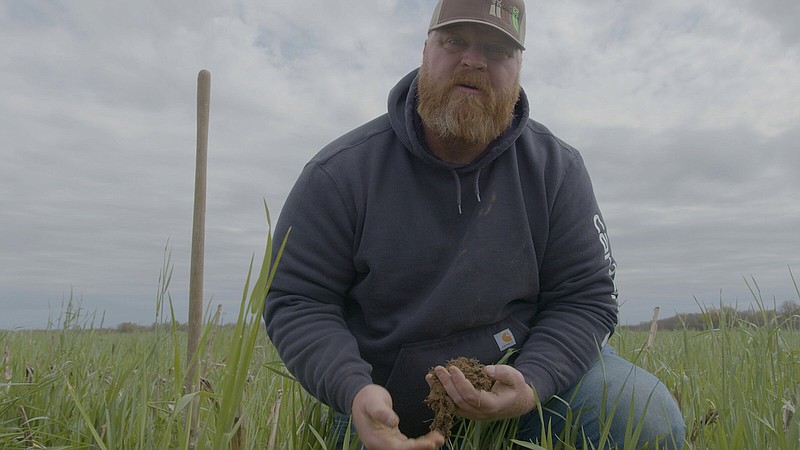Having grown up in Arkansas, I've driven all across this state more times than I can count on my hands. From the flat, water-logged Delta around Helena all the way to the rugged terrain at Devil's Den. And the one thing that always catches my eye in this natural state is the different shades of green that can be found everywhere: in the grass, in the trees, and in the brush. There are patches of green that have the faintest tint of blue, patches of green that are burnt yellow by the sun, and fields of flowing emerald farmland scattered with cows, rice, corn, and a variety of other crops and critters.
When I caught wind that PBS Arkansas planned to premiere its latest educational documentary "Dirt" at the Ron Robinson Theater, I jumped at the chance to attend the screening last week. Walking into the lobby, I noticed that there was quite a distinctive crowd. There were big burly muscled-up men -- obviously farmers and ranchers.
In the corner of the room, people were handing out literature, specifically a book titled "Conservation in Arkansas Agriculture" written by Lacey Thacker and Sara Mitchell, meant as a companion piece for the movie. Flipping through the book, it appeared as though there were a lot of text book style explanations of conservation, soil, and farming practices, about which I know nothing. It was at this moment I thought I might be in over my head and out of my element, because all I knew about dirt going into this movie was that it's brown, and that I walk on it.
Educational documentaries tend to have the reputation of being rather dry and clinical. But director Jennifer Gibson brings a unique style and voice to the topic that breathes life into our soil. Stylistically, it walks a thin line between a "Cosmos"-inspired approach where there's an attitude of science and wonder intersected with a quasi-Errol Morris quirkiness focusing on seven specific farmers -- turning the camera on them and depicting them as biologists, entrepreneurs, philosophers and humanitarians.
The movie starts with a brief history lesson mentioning The Dust Bowl and the increased demand on our agricultural systems, pointing out how much strain we have put on our farming soil for the last century. Then we are introduced to some of the state's farmers, ranging from goat herders and cattle ranchers to seasonal planters, each one showcasing how their farms utilize new technologies and practices to promote conservation and to help keep the dirt healthy. We meet people like the Peebles who practice Agro-tourism with their yearly corn maze. Phillip Haynie III who explains the conservation from an economical and philosophical point of view, and Adam Chappell -- one of the burly, bearded farmers -- who really steals the show, as he comically and scientifically talks about worm feces.
But it's here where the documentary starts to feel like it's talking a bit over your head, at least for a non-farmer. It starts going over conservation definitions, and even gives an ecological breakdown of the dirt, going through the periodic table, letting us know what elements are in the soil along with what critters, large and small, live beneath our feet and their jobs -- from worms that fertilize, to nematodes that act as microscopic pest control. But Gibson executes a wonderful explanation, making these science facts digestible. They are accompanied by informative and engrossing animated graphics that fit the quirky and fun nature of the film. So if at any point during the documentary you feel left behind by the scientific jargon, these graphics catch you up quickly.
Another strong aspect of the documentary is the cinematography, as it is quite beautiful, with great use of drone footage hovering and spanning over the fields from on high. It's these shots that show off the greenery of Arkansas that I truly admire. There are also fascinating shots where it appears as if we are inside the dirt, an earthworm's point of view, as the soil and other mud-bound critters move around the camera. And it's these little creative touches that make "Dirt" a refreshing approach to the public access documentary genre.
"Dirt" is financed with grants from the state and was commissioned by the Arkansas Offices of Natural Resources Conservation Service. The film's mission is not only to showcase new and effective ways to practice conservationism, but also to be an outreach for the general public to create awareness and educate people about one of our state's major industries. I have to say, they succeeded in their goal. After watching "Dirt," I know a lot more about the soily mounds of earth under my feet.
I hope to see more high-quality productions from Arkansas PBS in the future. "Dirt" can be seen on Arkansas PBS at 7 p.m. Thursday.
